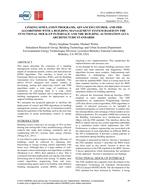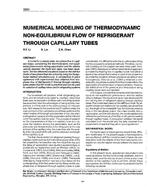Dampness in residential buildings is detrimental to the health of the occupants and causes the growth of mould and decay in the fabric of the building materials. In Taiwan the average winter relative humidity is 80% and the average temperature is 15degC (59degF). It has been found that the average winter indoor moisture content in Taiwanese apartments can be higher that the outdoor content by as much as 15%. Although the main cause for the increased indoor humidity levels has not been identified, removing the moisture generated from showers can help reduce the humidity. Focuses on a typical Taiwanese bathroom without windows and exhaust vents. Through an overall airflow design pattern and the utilisation of the thermal buoyancy effect, the moisture generated during showers was effectively removed with less outdoor air for maintaining indoor thermal comfort. As guidelines for the design, the appropriate window and transom locations with the corresponding outdoor air supply volume, as well as the lowest possible outdoor air temperature, were identified by several computational fluid dynamics simulations.
Units: Dual
KEYWORDS: year 1997, outdoor air, winter, relative humidity, bathrooms, ventilation, flats, Taiwan, air flow, moisture, showers, thermal comfort, windows, calculating, measuring, natural ventilation
Citation: ASHRAE Transactions, Vol.103, Part 2, Boston 1997
Product Details
- Published:
- 1997
- Number of Pages:
- 10
- File Size:
- 1 file , 1.1 MB
- Product Code(s):
- D-16421


